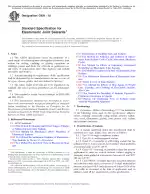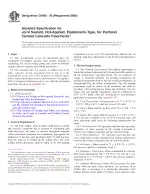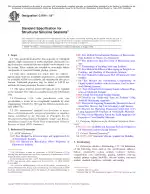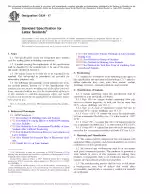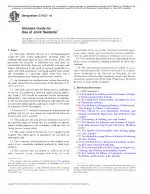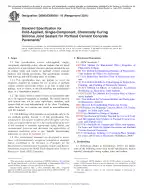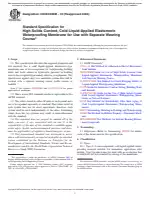ASTM C920-18 PDF Download
Standard ENStandard Specification for Elastomeric Joint Sealants
Also Known As:
The ASTM C920-18 standard outlines the properties and requirements for a cured single- or multicomponent cold-applied elastomeric joint sealant. The standard covers the use of the sealant in sealing, caulking, or glazing operations on buildings, plazas, and decks for both pedestrian and vehicular use, excluding highway and airfield pavements and bridges.
The sealant is classified based on type, grade, class, and use. Type S refers to a single-component sealant, while type M refers to a multicomponent sealant. Grade P represents a pourable or self-leveling sealant, and grade NS refers to a nonsag or gunnable sealant. Classes are designated as 100/50, 50, 35, 25, and 12.5. The sealant can be used for traffic (T), non-traffic (NT), immersion (I), movement (M), glazing (G), adhesion (A), and other (O) purposes.
The standard specifies that the sealant should maintain its properties for at least 6 months when stored in its original unopened container at temperatures not exceeding 27°C (80°F). The flow characteristics of the sealant should meet the requirements for smooth, level surfaces for pourable or self-leveling sealants, and appropriate displacement for nonsag or gunnable sealants. Extrusion rates are also specified for different types and grades of sealants.
Additionally, the sealant should exhibit specific hardness readings after being properly cured, and should not experience significant weight loss, cracking, chalking, or transfer to polyethylene film. There should be no visible staining on white cement mortar when the sealant is tested. Adhesion, cohesion, and peel tests are conducted to evaluate the performance of the sealant under cyclic movement, ultraviolet exposure through glass, and accelerated weathering effects.
The standard also emphasizes that not all sealants meeting the specification are suitable for all applications and substrates. The proper classification of the sealant must be specified based on the intended use. Test methods are provided for standard specimen substrates, but additional or alternative substrates can be specified for testing if needed. The standard concludes by noting that it is similar, but not identical, to ISO 11600 and ISO 11618.
| Descriptors | sealing, pedestrian pavements, decks, cold-applied joint sealants, elastomeric joint sealants,Building Decks,Elastomeric Sealants,Glazing,Physical Process,Roads and Pavements |
| ICS Codes | 91.100.50 - Binders. Sealing materials |
| Language(s) | English |
| File Size | 81.9 KB |

